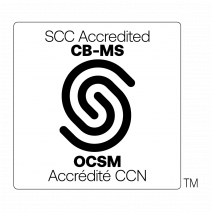Implementing DMARC, DKIM, and SPF: Control Requirement 5.7.3.7
Email remains a primary tool for communication within organizations and with external stakeholders. However, it is also a common target for cyber threats such as phishing, spoofing, and spam. To mitigate these risks, the CAN/DGSI 104:2021 Rev 1 2024 standard includes Control Requirement 5.7.3.7, which mandates the implementation of DMARC, DKIM, and SPF on all organization email services. This blog will explore the importance of these email authentication protocols, how they work, and the benefits they bring to organizational security.
Understanding Email Authentication Protocols
Email authentication protocols are designed to verify the legitimacy of email messages and protect against malicious activities. The three key protocols are:
DMARC (Domain-based Message Authentication, Reporting & Conformance): DMARC builds on SPF and DKIM by providing a mechanism for domain owners to publish policies on how to handle emails that fail authentication checks. It also offers reporting capabilities to monitor and improve email security.
DKIM (DomainKeys Identified Mail): DKIM uses cryptographic signatures to verify that an email message has not been altered in transit and that it originates from the claimed domain. This helps ensure the integrity and authenticity of the message.
SPF (Sender Policy Framework): SPF allows domain owners to specify which IP addresses are authorized to send emails on behalf of their domain. This helps prevent unauthorized senders from impersonating the domain.
Why Implement DMARC, DKIM, and SPF?
Enhanced Security: Implementing these protocols significantly reduces the risk of email-based attacks. By verifying the authenticity of email messages, organizations can prevent phishing, spoofing, and spam.
Improved Deliverability: Emails that pass authentication checks are less likely to be flagged as suspicious or sent to junk folders. This ensures that legitimate messages reach their intended recipients.
Brand Protection: By preventing unauthorized use of the organization’s domain, these protocols help protect the brand’s reputation and build trust with customers and partners.
Regulatory Compliance: Adhering to standards like CAN/DGSI 104:2021 Rev 1 2024 ensures that organizations meet regulatory requirements, avoiding potential fines and legal issues.
Implementing DMARC, DKIM, and SPF
To comply with Control Requirement 5.7.3.7, organizations must take several steps:
Assess Current Email Security: Evaluate existing email authentication protocols to identify gaps and areas for improvement. This includes reviewing SPF records, DKIM signatures, and DMARC policies.
Configure SPF: Publish SPF records in the domain’s DNS to specify authorized senders. Ensure that all legitimate email sources are included and regularly update the records as needed.
Set Up DKIM: Generate DKIM keys and configure email servers to sign outgoing messages. Publish the public keys in the domain’s DNS and verify that signatures are correctly applied.
Implement DMARC: Publish DMARC policies in the domain’s DNS to specify how to handle emails that fail SPF and DKIM checks. Start with a policy of p=none to monitor email traffic and gradually move to stricter policies (p=quarantine or p=reject) based on the insights gained.
Monitor and Maintain: Regularly review email authentication reports to identify and address any issues. Conduct periodic audits to ensure that SPF, DKIM, and DMARC configurations remain effective.
Best Practices for Email Authentication
Start with Monitoring: Begin with a DMARC policy of p=none to monitor email traffic and understand the impact of authentication checks. Use the reports to identify legitimate sources and unauthorized senders.
Gradually Enforce Policies: Once you have a clear understanding of email traffic, gradually enforce stricter DMARC policies (p=quarantine or p=reject) to enhance security.
Regular Updates: Keep SPF records and DKIM keys up to date to reflect changes in email infrastructure. Regularly review and update DMARC policies based on the insights gained from reports.
Educate Employees: Train employees on the importance of email authentication and best practices for handling suspicious emails. Encourage them to report any anomalies.
Case Studies and Examples
To illustrate the importance and effectiveness of DMARC, DKIM, and SPF, consider the following case studies:
Financial Services: A bank implemented DMARC, DKIM, and SPF to protect against phishing attacks targeting its customers. By verifying the authenticity of emails, the bank significantly reduced the number of fraudulent messages and built trust with its clients.
Healthcare Sector: A hospital used these protocols to secure email communications with patients and partners. This helped protect sensitive medical information and ensured compliance with regulatory requirements.
E-commerce Industry: An online retailer implemented DMARC, DKIM, and SPF to prevent spoofing of its domain. This protected the brand’s reputation and improved the deliverability of marketing emails.
Conclusion
Implementing DMARC, DKIM, and SPF is a critical component of a robust email security strategy. By complying with Control Requirement 5.7.3.7 as outlined in the CAN/DGSI 104:2021 Rev 1 2024 standard, organizations can protect their email services from malicious activities, improve deliverability, and safeguard their brand’s reputation. By staying vigilant and continuously improving email authentication practices, organizations can maintain a strong defense against email-based threats and ensure the security of their communications. Contact us today to get started on your certification journey!

